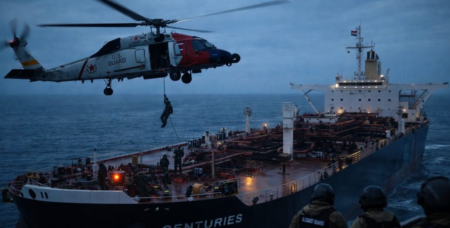 INTERNATIONAL DESK: The claim of the State Bank of Pakistan (SBP) that Pakistan’s financial sector remains resilient amid challenges does not reflect the actual plight of its banking sector. The Financial Stability Review – 2022 is not telling the truth. Distress in Pakistan’s banking sector often comes upfront amidst the severe economic crisis. Recently, the IMF said that delays in structural reforms – such as ‘resolving’ the four undercapitalized banks – can hamper stability in the country’s financial sector. It suggested SBP accelerate the recapitalization process using its existing powers.
INTERNATIONAL DESK: The claim of the State Bank of Pakistan (SBP) that Pakistan’s financial sector remains resilient amid challenges does not reflect the actual plight of its banking sector. The Financial Stability Review – 2022 is not telling the truth. Distress in Pakistan’s banking sector often comes upfront amidst the severe economic crisis. Recently, the IMF said that delays in structural reforms – such as ‘resolving’ the four undercapitalized banks – can hamper stability in the country’s financial sector. It suggested SBP accelerate the recapitalization process using its existing powers.
According to the IMF, the SBP has also committed to move ahead with liquidating one public-sector bank – presumably SME Bank. The undercapitalized bank, for example, Sindh Bank had suffered losses worth PRs.2 billion and PRs.7.8 billion in non-performing loans. Its capital stood at PRs.3.16 billion against the prescribed minimum capital requirement of PRs.10 billion at the end of 2020 and the bank continued to face a deteriorating situation through the Covid and Russia-Ukraine conflict.
Earlier in March, Moody’s Investors Service downgraded the long-term deposit ratings of five Pakistani banks to Caa3 from Caa1. The banks are Allied Bank Ltd., Habib Bank Ltd., MCB Bank Ltd., National Bank of Pakistan and United Bank Ltd. Moody’s also downgraded the five banks’ long-term foreign currency Counterparty Risk Ratings (CRRs) to Caa3 from Caa1.
PwC’s recent banking publication titled “Navigating the Future of Opportunities and Challenges” also indicates some of the challenges faced by the Pak bank industry. It states that “Investment to Deposit Ratio (IDR) has been rising and now stands at 77%”. It is surprising to note that the IDR is highest in Pakistan compared to other peer countries like Bangladesh (25%) and Sri Lanka (34%).
Normally it would have been a positive development, but in Pakistan’s case bank’s major investments are in government securities which are now around 90%. On the other hand, lending to the private sector in Pakistan is significantly lower at 15% of GDP for Pak banks compared to Bangladesh (39%) and Sri Lanka (47%). That means the private sector is deprived of financing. Investing in government securities indicates that Pak banks are risk averse and deploying funds in government securities pushes up the interest rates and ‘crowds out’ private investment. Pak bank’s declining non-performing loans to 7.1% in 2022 from 7.5% during 2022 also need to be judged from the fact that most of the lending is on government securities which are an investment for banks! It does not spare much for credit creation in the economy for productive investment.
Another index for the health of the banking sector viz. operating expenses increased by a whopping 25% in 2022 to PRs 691 billion from PRs 552 billion in the previous year and this might continue eroding the net profit of Pak banks. Pakistan’s major seven banks witnessed an increase in operating expenses by 30% or more in December 2022 from December 2021. They are Habib Bank Ltd. (30%), Bank Alfalah (37%), Nation Bank of Pakistan (31%), Meezan Bank (34%), The Bank of Punjab (33%), Habib Metro (33%) and Bank Al Habib (32%). It shows the increasing burden of operations of the banks in Pakistan.
Further, the lack of modernization and digitalization of the economy is also hurting the profitability of Pak banks. The fragile condition can be ascertained from the fact that Internet banking platforms’ transactions were just 27 per annum (2 per month, per person) which is much lower than its peers in the region, indicating a lack of modernization. Merchants in Pakistan also consider cash alternatives as counter-productive since they have to pay the merchant discount rate (MDR).
There are some silver linings in the banking sector of Pakistan. One of the positive trends is that the financial debt in terms of assets-to-GDP ratio declined to 61.3% in the banking sector. Another one is that the banking spread is increasing and it could be boosting banks’ earnings.
JS Global Research reported that Pakistan’s weighted average banking spread hit a two-decade high at 7.73% in the quarter that ended on June 30, 2023. It is the difference between the interest rate that banks charge on lending and the rate of return they pay on deposits. The spread was the highest since 2004, against 4.14% in the October-December period of 2021. Further, for new loans, the spreads have been widened significantly to 9.73% compared to 2.86% in the third quarter of calendar year 2015.
But the increasing spread may lead to costly lending to private sector industries which were facing shut-downs due to shortages in imported raw materials as well as power outages. SBP’s benchmark policy rate is at a historical high of 22%. It has raised the key policy rate by 12.25 percentage points since April 2022, mainly to curb soaring inflation. This indicates a deteriorating environment for investment.
The Pak banking sector has also got some success in containing Non-Performing Assets (NPA), but much remains to be done for the provisioning of capital to sick banks.
However, the way rate of interest is moving up in Pakistan amid spiralling inflation does not auger well for investment and capital formation in the Pak economy. The tax regime in Pakistan for organized business is not conducive and it is also adversely impacting the Pak banking industry. Overseas Investors Chamber of Commerce and Industry (OICCI) President Amir Paracha claimed that the government has effectively increased the tax on organized businesses to over 40%, the highest in the region, which is also hitting the banking sector.
The saga of government borrowing from the bank continues in the context of the government’s failure to mobilize resources. In the latest auction of T-bills, the Pak government borrowed PRs. 621 billion from commercial banks at an interest rate of 23%, which is the highest so far. Further, the interest rate is expected to surge to a new high in case the government acquires targeted Rs.900 billion.
The GDP growth rate was just 0.29% in FY 2022-23, missing the target of 5% as a result of the economic crisis. There were industrial disruptions, especially the textiles and auto industry due to the forex and power crisis since the beginning of 2023. Their impact on the banking sector has not been ascertained so far. The banking woes could cripple the growth momentum and economic recovery. The Pak banking sector needs serious structural reforms to stay afloat in times of crisis. (ANLITE)
iNews covers the latest and most impactful stories across
entertainment,
business,
sports,
politics, and
technology,
from AI breakthroughs to major global developments. Stay updated with the trends shaping our world. For news tips, editorial feedback, or professional inquiries, please email us at
[email protected].
Get the latest news and Breaking News first by following us on
Google News,
Twitter,
Facebook,
Telegram
, and subscribe to our
YouTube channel.



